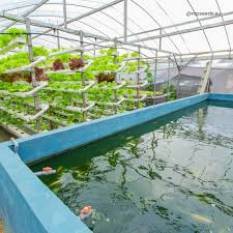KALIMPONG, 4 July 2025: In a bold bid to address the district’s water woes while boosting rural incomes and nutrition, the Kalimpong district administration has turned to aquaponics — a novel, closed-loop farming system that combines aquaculture and hydroponics.
Led by the district fisheries department, the initiative is gaining momentum with institutional backing, aiming to integrate aquaponics into homestays, schools, and farmlands across the Himalayan region.
“Aquaponics can conserve up to 80 percent of water compared to traditional farming, which is vital for Kalimpong,” said Sumanta Kumar Biswas, district fisheries officer. “It suits our conditions, supports local vegetables, and indigenous fish like trout in higher altitudes and Mahseer in mid-elevation areas.”
In this sustainable system, nutrient-rich water from fish tanks is circulated through soil-less grow beds where plants such as spinach, cabbage, bok choi, and lettuce thrive. These plants, in turn, filter and purify the water before it returns to the fish tanks — eliminating the need for chemical fertilizers while dramatically reducing water use.
The district is encouraging homestay operators to adopt aquaponics, noting that Bengali tourists in particular enjoy local fish, creating a steady market. Plans are also underway to introduce aquaponics in schools to supplement mid-day meals with fresh fish and organic vegetables.
“This model needs only 100 square feet to get started, which is perfect for small landholders,” Biswas added. “We see this as a game-changer for nutrition and income generation.”
Currently, around 1,500 fishery farmers are registered in the district, and officials expect over 1,000 to adopt aquaponics soon.
A district-level workshop on June 21 attracted wide participation from local farmers eager to learn the technique, officials said.
District Magistrate T. Balasubramanian emphasized the administration’s long-term commitment: “We aim to link aquaponics to the Utkarsh Bangla skill training program and government loan schemes so it is accessible and sustainable for all.”
Experts agree the closed-loop system represents a highly efficient, eco-friendly alternative to conventional farming — one that could set an example for water-scarce regions beyond Kalimpong.




















